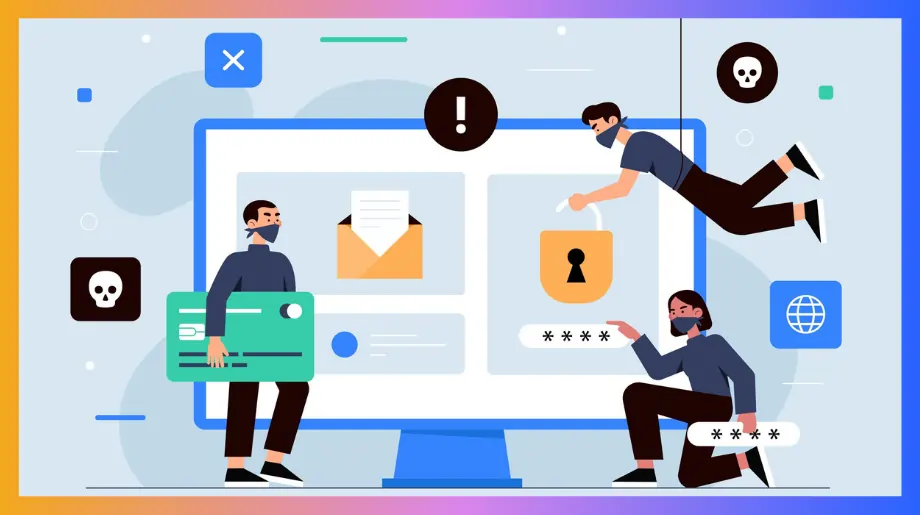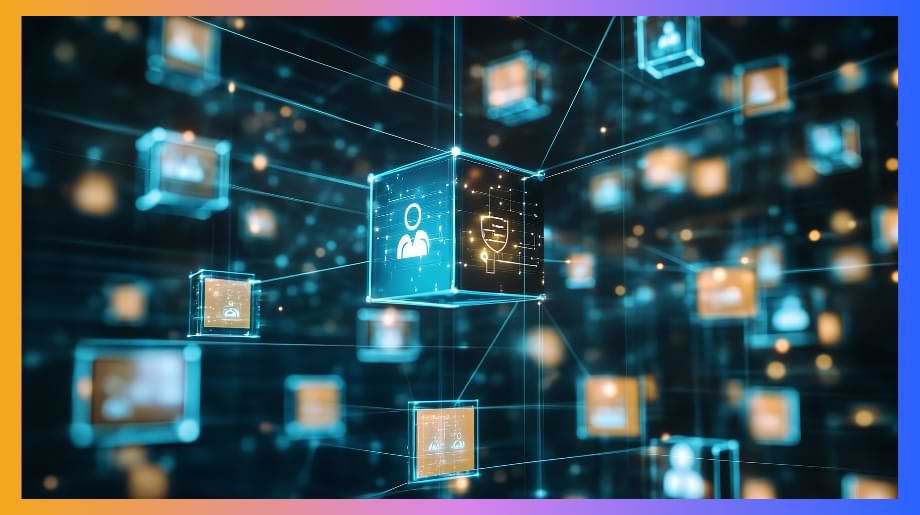Whether it’s to comply with international trade regulations, improve data privacy, or protect financial information - IGA can be invaluable.
How do Identity Governance and administration tools help? Well, aside from protecting unwarranted access they also dramatically reduce the risks around information security.
With user-provisioning and de-provisioning that can be made a whole lot easier, it also helps a great deal with regulatory compliance. That said it comes with its own set of pros and cons. And to help you understand it better, we’ll cover all of this and more.
What are the Benefits of Identity Governance and Administration?
Reduces Unauthorized Access and Risks
Identity governance and administration (IGA) improves your security by putting a structured framework for managing user identities and access rights in place.
What this framework does is use role-based access controls (RBAC) and customized policy enforcement, to make sure that everyone has the right permission and access based on the roles and tasks they undertake.
Moreover, IGA systems constantly monitor access patterns and can trigger automated workflows for approval or revocation of access rights when anomalies are detected.
This proactive approach minimizes the risk of unauthorized access by ensuring that only validated identities are granted access to sensitive resources. As such, organizations can maintain robust security while optimizing user productivity.
Easier Management When Onboarding or Offboarding Users
IGA improves user management during onboarding and offboarding through automated workflows and centralized policy enforcement.
What these systems do is utilize predefined access roles and entitlement management to make sure that new users receive appropriate permissions immediately upon joining.
During offboarding, IGA solutions automate the revocation of access rights, reducing the risk of lingering permissions. Integration with HR systems allows for real-time updates on user status, ensuring compliance and security.
Sound familiar? That is no surprise since organizations across various sectors use IGA to improve operational efficiency. Aside from this, it also maintains strict access control, ultimately minimizing risks associated with user transitions.
Helps You Track Malicious Access Requests Better
Identity governance and administration (IGA) enhances the tracking of malicious access requests through advanced analytics and real-time monitoring.
These systems use contextual access controls that analyze user behavior and access patterns, enabling the detection of anomalies indicative of potential threats.
By aggregating logs and employing machine learning algorithms, IGA solutions can identify suspicious activities like unauthorized access attempts or unusual data access requests. Alerts can be generated automatically for immediate investigation, allowing organizations to respond swiftly to potential security breaches.
Helps Lower Administrative Costs
(IGA) reduces administrative costs by automating identity management processes like access requests and role assignments. These systems utilize centralized dashboards for better visibility, allowing administrators to manage user access and entitlements with ease.
By using self-service capabilities, IGA reduces the burden on IT teams for routine tasks like password resets and access approvals. Additionally, automated compliance reporting minimizes manual efforts in auditing and regulatory adherence.
Enables Secure User Access in Remote Environments
Identity governance and administration (IGA) enables secure user access in remote environments through context-aware access controls and continuous monitoring.
These systems use adaptive authentication mechanisms, assessing user behavior and environmental factors to enforce dynamic access policies.
By using identity verification techniques like multi-factor authentication, IGA makes sure that only authorized users can access sensitive resources, regardless of their location. Additionally, real-time analytics provide insights into access patterns, allowing for quick detection of anomalies or unauthorized attempts.
Notably, many organizations rely on IGA frameworks to maintain robust security and compliance in an increasingly distributed workforce, ensuring a secure remote access experience.
Suitable for Growing Companies
IGA frameworks can adapt to expanding user bases and evolving access requirements, ensuring that access controls remain consistent and compliant.
By using role-based access control (RBAC), organizations can easily manage user permissions aligned with business roles, reducing administrative overhead. Additionally, automated workflows improve identity provisioning and de-provisioning, minimizing the risk of human error.
Furthermore, IGA solutions provide centralized visibility into user access and compliance, empowering organizations to meet regulatory requirements as they scale. As such, IGA becomes an essential tool for supporting secure growth.
Better Compliance With Industry and Government Regulations
These systems enable organizations to define access policies that align with regulatory requirements, ensuring that only authorized personnel can access sensitive data.
Moreover, IGA solutions facilitate continuous monitoring of user activity, enabling real-time detection of potential compliance violations. Automated workflows improve the processes of user provisioning and de-provisioning, reducing the risk of unauthorized access altogether.
Additionally, comprehensive audit trails and reporting capabilities provide transparent documentation needed for regulatory assessments. Thus, IGA becomes integral in maintaining compliance and reducing audit-related risks.
What are the Challenges of Identity Governance and Administration?
It Can Get Difficult to Make Sure App Integrations Stay Updated
s organizations adopt new applications and platforms, maintaining consistent access controls and compliance across diverse systems requires continuous monitoring and management.
Additionally, the integration of legacy systems may complicate data synchronization and access policy enforcement. Organizations must make use of automated processes to regularly assess integration points, ensuring they align with evolving security standards and compliance regulations.
Moreover, discrepancies in access permissions between integrated applications can lead to security vulnerabilities. Therefore, organizations must prioritize robust IGA solutions that adapt to changing environments and facilitate seamless application integration management.
Many IGA Frameworks are Hard to Use
Many identity governance and administration (IGA) frameworks are hard to implement due to their inherent complexity and integration challenges. The need for comprehensive policy definitions and role-based access controls requires extensive planning and collaboration across various departments.
Additionally, integrating IGA solutions with legacy systems and diverse applications can introduce compatibility issues, complicating the deployment process. Organizations often face resistance to change, as users may be accustomed to existing workflows.
Moreover, the continuous requirement for updates and compliance monitoring adds to the operational burden.
Not All Business Processes Can Be Automated
The fact is, not all business processes can be automated! Although in an ideal world, we’d like to believe they can, the fact remains that some departments and company needs vary from time to time.
Identity governance and administration (IGA) adds to this complexity by introducing layers of compliance and oversight. While IGA frameworks improve user access management, they also require human intervention for nuanced decision-making processes, such as role definitions and exception handling.
Furthermore, integrating IGA with existing workflows may reveal processes that demand manual oversight, complicating automation efforts. Organizations may struggle with inconsistent policies across departments, making it challenging to establish a cohesive automation strategy.
Why Use Infisign for Identity Governance and Administration?
While it can be easy to be carried away with all the different identity and governance software, making sure that you make use of one that is versatile can cost you a lot less in both money and time as your organization grows.
At Infisign, our IAM and CIAM products come with Identity Governence and Administration that allow you to manage accessibility and make it a lot easier on one platform. For company administrators, this can reduce overhead costs dramatically,
With Infisign you get single-sign-on, MFA, and zero knowledge-proof infrastructure that makes it perfect for your customers and industry compliance. Want to know more? Why not reach out for a free demo call with our support team?





















